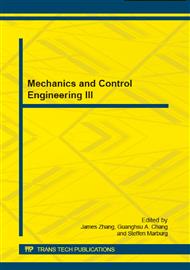p.102
p.113
p.118
p.131
p.137
p.143
p.148
p.154
p.161
Numerical Simulation and Investigation of Transonic & Symmetrical Airfoil for Helicopter Main Rotor Blade Application
Abstract:
Helicopter rotor aerodynamics is prognosticated to be one of the most perplexing and enigmatic affliction encountered by both researchers and aviators throughout the ages. The bewilderment of the flow field around the main rotor blade ceaselessly remains unrequited in tangible flight environments. Appalling calamities repeatedly befall owing to these unforeseen and equivocal instances. In order to extricate these impediments, one must go back to the brass tacks and apprehend the cause. However, it is every so often exceedingly disconcerting to obtain experimental data due to intricacy, perplexity and substantial price tag. Subsequently, computational simulation is progressively becoming more of a preferred choice in recent times. Bearing this in mind, this study intended to simulate and visualize the air flow configuration of the main rotor blade using symmetrical and transonic airfoils to demarcate their physiognomies and behavior. Results have revealed that the transonic airfoil has a higher lift coefficient (Cl) than the symmetrical airfoil. Contrariwise, if used in an actual rotorcraft, the transonic airfoil can cause stern apprehension in terms of stability and control.
Info:
Periodical:
Pages:
137-142
Citation:
Online since:
December 2014
Authors:
Price:
Сopyright:
© 2015 Trans Tech Publications Ltd. All Rights Reserved
Share:
Citation:


